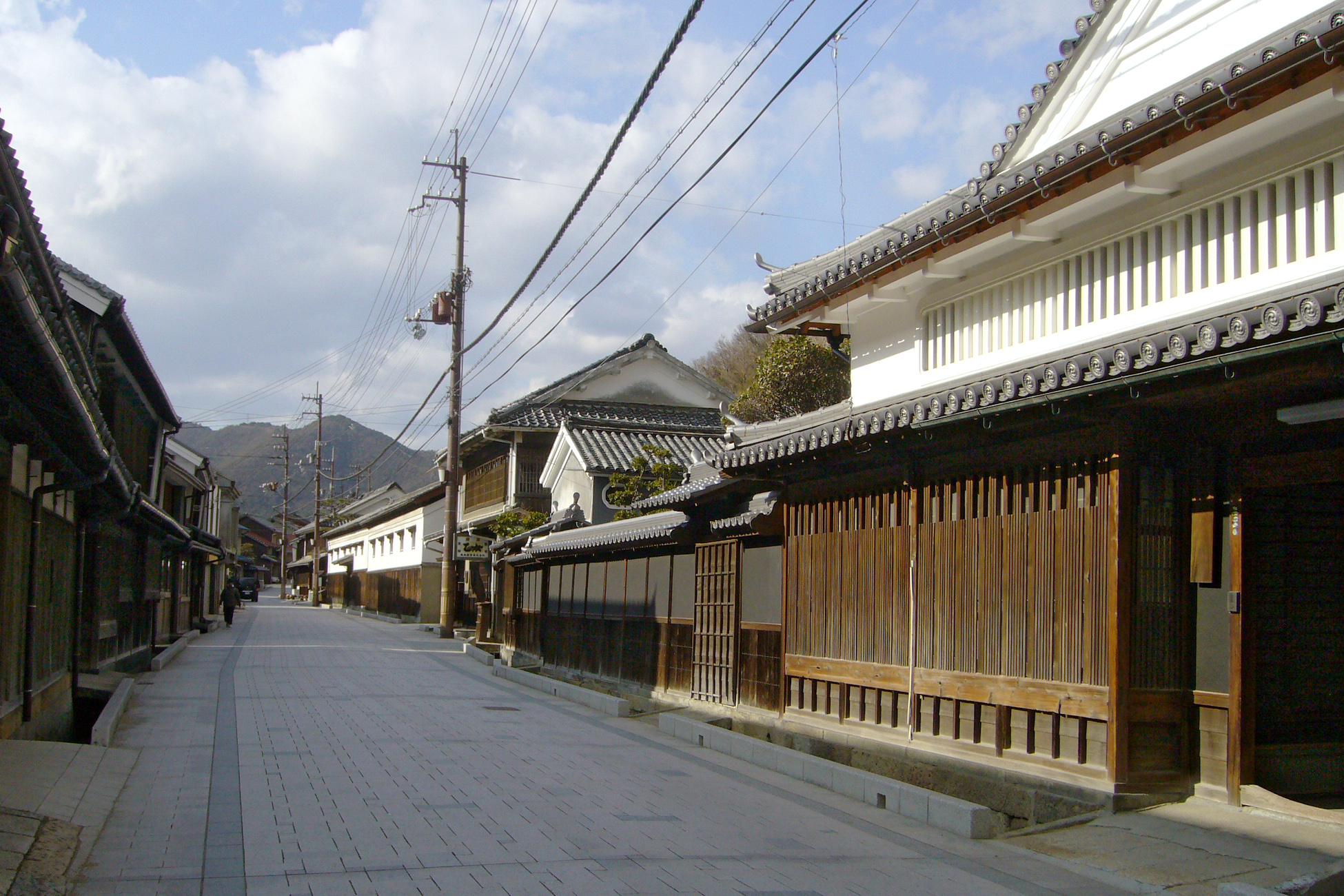|
Sannosuke Ueshima
was a Japanese martial arts master who developed and founded the Kushin-ryu style of karate in Osaka, Japan. Karate-do When he was three years old, he began studying Konshin-ryu Juhojutsu ( Jujutsu) at Kiyotada Kahei Matsubara's academy in Akō, Hyōgo. When he was nine years old, he started the study of the karate katas Channan and Kūshankū from Sugaya Ueshima, an Akō police officer who was originally from Okinawa. Konshin-ryu Juho-jutsu In 1918, at the age of 25, Ueshima received the title of professor of Konshin-ryu juho-jutsu (Konshin-ryu jujutsu) from Matsubara and Guikyo Mazai Akada. After receiving his title, Ueshima moved to Osaka, where he opened the Konshin-ryu Juhojutsu (Konshin-ryu jujutsu) Academy. Several Okinawan karate teachers practiced and taught karate there. These included: * Chōki Motobu who taught the Shuri-te and Tomari-te style. * Kanamori "Kinsei" Kinjo who taught the styles Shōrin-ryū and Gōjū-ryū. * Chōshin Chibana who founder and ... [...More Info...] [...Related Items...] OR: [Wikipedia] [Google] [Baidu] |
Akō, Hyōgo
is a city located in southwestern Hyōgo Prefecture, Japan. , the city had an estimated population of 45,747 in 20563 households and a population density of 360 persons per km². The total area of the city is . Geography Akō is located in far southwestern Hyōgo Prefecture. The city is on the border of the Hyōgo and Okayama prefectures, which also divides the Kinki and Chūgoku areas. On each side of the border, ancient Harima and Bizen provinces, which are now Akō and Bizen cities, respectively (except for the former village of Fukukawa, now part of Akō but formerly belonging to Bizen Province), have cultivated their own cultures. Therefore, even at the present days, dialects are vastly different on the sides of the border. A traveller from west to east on the JR San'yō Main Line will notice that the dialect of passengers suddenly changes between Kamigori station in Hyogo prefecture and Mitsuishi station in Okayama prefecture. In Akō, people speak a type of the ... [...More Info...] [...Related Items...] OR: [Wikipedia] [Google] [Baidu] |
Shōrin-ryū
Shōrin-ryū (少林流) is one of the major modern Okinawan martial arts and is one of the oldest styles of karate. It was named by Choshin Chibana in 1933, but the system itself is much older. The characters 少林, meaning "sparse" or "scanty" and "forest" respectively and pronounced "shōrin" in Japanese, are also used in the Chinese and Japanese words for Shaolin. " Ryū" means "school". Shōrin-ryū combines elements of the traditional Okinawan fighting styles of Shuri-te. History Chōshin Chibana was a top student of the great master of shuri-te, Ankō Itosu. Ankō Itosu was the top student of Matsumura Sōkon, who was a renowned warrior in his time; bodyguard to three kings of Okinawa, he has been called the Miyamoto Musashi of Okinawa and was dubbed '' bushi'', or warrior, by his king. However, while Sōkon is often referred to as the "founder" of Shuri-te, he did not invent all of its components. Chōshin Chibana never practiced kobudo. In 1933, Chōshin Chibana chose ... [...More Info...] [...Related Items...] OR: [Wikipedia] [Google] [Baidu] |
1893 Births
Events January–March * January 2 – Webb C. Ball introduces railroad chronometers, which become the general railroad timepiece standards in North America. * Mark Twain started writing Puddn'head Wilson. * January 6 – The Washington National Cathedral is chartered by Congress; the charter is signed by President Benjamin Harrison. * January 13 ** The Independent Labour Party of the United Kingdom has its first meeting. ** U.S. Marines from the ''USS Boston'' land in Honolulu, Hawaii, to prevent the queen from abrogating the Bayonet Constitution. * January 15 – The ''Telefon Hírmondó'' service starts with around 60 subscribers, in Budapest. * January 17 – Overthrow of the Kingdom of Hawaii: Lorrin A. Thurston and the Citizen's Committee of Public Safety in Hawaii, with the intervention of the United States Marine Corps, overthrow the government of Queen Liliuokalani. * January 21 ** The Cherry Sisters first perform in Marion, Iowa. ** The T ... [...More Info...] [...Related Items...] OR: [Wikipedia] [Google] [Baidu] |
Japanese Male Karateka
Japanese may refer to: * Something from or related to Japan, an island country in East Asia * Japanese language, spoken mainly in Japan * Japanese people, the ethnic group that identifies with Japan through ancestry or culture ** Japanese diaspora, Japanese emigrants and their descendants around the world * Japanese citizens, nationals of Japan under Japanese nationality law ** Foreign-born Japanese, naturalized citizens of Japan * Japanese writing system, consisting of kanji and kana * Japanese cuisine, the food and food culture of Japan See also * List of Japanese people * * Japonica (other) * Japonicum * Japonicus * Japanese studies Japanese studies (Japanese: ) or Japan studies (sometimes Japanology in Europe), is a sub-field of area studies or East Asian studies involved in social sciences and humanities research on Japan. It incorporates fields such as the study of Japanese ... {{disambiguation Language and nationality disambiguation pages ... [...More Info...] [...Related Items...] OR: [Wikipedia] [Google] [Baidu] |
Martial Arts School Founders
Marcus Valerius Martialis (known in English as Martial ; March, between 38 and 41 AD – between 102 and 104 AD) was a Roman poet from Hispania (modern Spain) best known for his twelve books of ''Epigrams'', published in Rome between AD 86 and 103, during the reigns of the emperors Domitian, Nerva and Trajan. In these short, witty poems he cheerfully satirises city life and the scandalous activities of his acquaintances, and romanticises his provincial upbringing. He wrote a total of 1,561 epigrams, of which 1,235 are in elegiac couplets. Martial has been called the greatest Latin epigrammatist, and is considered the creator of the modern epigram. Early life Knowledge of his origins and early life are derived almost entirely from his works, which can be more or less dated according to the well-known events to which they refer. In Book X of his ''Epigrams'', composed between 95 and 98, he mentions celebrating his fifty-seventh birthday; hence he was born during March 38, 39, 4 ... [...More Info...] [...Related Items...] OR: [Wikipedia] [Google] [Baidu] |
World War II
World War II or the Second World War, often abbreviated as WWII or WW2, was a world war that lasted from 1939 to 1945. It involved the vast majority of the world's countries—including all of the great powers—forming two opposing military alliances: the Allies and the Axis powers. World War II was a total war that directly involved more than 100 million personnel from more than 30 countries. The major participants in the war threw their entire economic, industrial, and scientific capabilities behind the war effort, blurring the distinction between civilian and military resources. Aircraft played a major role in the conflict, enabling the strategic bombing of population centres and deploying the only two nuclear weapons ever used in war. World War II was by far the deadliest conflict in human history; it resulted in 70 to 85 million fatalities, mostly among civilians. Tens of millions died due to genocides (including the Holocaust), starvation, ma ... [...More Info...] [...Related Items...] OR: [Wikipedia] [Google] [Baidu] |
Shindo (martial Art) ''
{{disambiguation ...
Shindo or Shindō may refer to: * *Shindo (religion) (신도), an alternative name of Korean Shamanism used by Shamanic associations in modern South Korea. People *Shindō (surname) * T.K. Shindo (1890-1974), Japanese photographer Other uses *, a Japanese manga by Akira Sasō (1998), film and novel by Koji Hagiuda (2007) *"Shindo", a song by Less Than Jake on the 1996 album ''Losing Streak ''Losing Streak'' is the second studio album by ska punk band Less Than Jake, released on November 12, 1996 on Capitol Records. The album was recorded at Criteria Studios in Miami, Florida and Mirror Image Studios in Gainesville, Florida, bo ... [...More Info...] [...Related Items...] OR: [Wikipedia] [Google] [Baidu] |
Chōjun Miyagi
was an Okinawan martial artist who founded the Gōjū-ryū school of karate by blending Okinawan and Chinese influences. Life Early life and training Sensei Miyagi was born in Higashimachi, Naha, Okinawa on April 25, 1888. One of his parents was a wealthy shop owner. Chojun Miyagi began studying Okinawan martial arts under Ryuko Aragaki at age 11. At age 14, Miyagi was introduced to Kanryo Higashionna (Higaonna Kanryō) by Aragaki. Under his tutelage, Miyagi underwent a very long and arduous period of training. His training with Higaonna was interrupted for a two-year period while Miyagi completed his military service, 1910–1912, in Miyakonojō, Miyazaki. Miyagi trained under Higaonna for 15 years until Higaonna's death in 1916. Training in China In May 1915, before the death of Higaonna, Miyagi travelled to Fujian Province. In China he visited the grave of Higaonna's teacher, Ryū Ryū Ko. In this first trip he travelled with Eisho Nakamoto. After Kanryo Higaonna's death ... [...More Info...] [...Related Items...] OR: [Wikipedia] [Google] [Baidu] |
Dai Nippon Butoku Kai
''Dai Nippon Butoku Kai'' (DNBK, ja, 大日本武徳会, en, "Greater Japan Martial Virtue Society") was a martial arts organization with strong ties to WWII-era Japanese government, originally established in 1895 in Kyoto. Following the end of World War II, the DNBK changed its status from a public to a private organization. Enrollment fell significantly from millions to hundreds and it lost its authority to govern all martial arts organizations in Japan. In 1946, due to its association with the Japanese Military during wartime, the GHQ dissolved the DNBK. The following years, more than 1,300 leaders and officials of the DNBK were purged—ostracized, lost their jobs, and were forbidden to take any government position. In 1953, a new organization with the same name was established with a new philosophical vision of preserving the long-standing illustrious classical martial virtues and traditions. History The Establishment of the Original Military School The original Dai Ni ... [...More Info...] [...Related Items...] OR: [Wikipedia] [Google] [Baidu] |
Chōshin Chibana
was an Okinawan martial artist who developed Shorin-ryū karate based on what he had learned from Ankō Itosu. He was the last of the pre-World War karate masters, also called the "Last Warrior of Shuri" He was the first to establish a Japanese ryu name for an Okinawan karate style, calling Itosu's karate "Shorin-Ryu" (小林流 or "the small forest school") in 1929. Early years Chibana Chōshin was born as the second son of Chibana Chohaku and wife Nabi on 5 June 1885. The family held a distinguished history and resided in Okinawa's Shuri Tori-Hori village (presently Naha City, Shuri Tori-Hori Town). His family traced their lineage from a branch of the Katsuren Court and Choharu, Prince of Kochinta, fifth son of King Shoshitsu (Tei), but lost their titles and status after Mutsuhito, the Meiji Emperor, banned the caste system in Japan. To support themselves, the family turned to Awamori brewing. [...More Info...] [...Related Items...] OR: [Wikipedia] [Google] [Baidu] |
Gōjū-ryū
, Japanese for "hard-soft style", is one of the main traditional Okinawan styles of karate, featuring a combination of hard and soft techniques. Both principles, hard and soft, come from the famous martial arts book used by Okinawan masters during the 19th and 20th centuries, the '' Bubishi'' (). Gō, which means hard, refers to closed hand techniques or straight linear attacks; jū, which means soft, refers to open hand techniques and circular movements. Gōjū-ryū incorporates both circular and linear movements into its curriculum, combining hard striking attacks such as kicks and close hand punches with softer open hand circular techniques for attacking, blocking, and controlling the opponent, including joint locks, grappling, takedowns, and throws. Major emphasis is given to breathing correctly in all of the kata but particularly in the Sanchin kata which is one of two core kata of this style. The second kata is called Tensho, meant to teach the student about the soft s ... [...More Info...] [...Related Items...] OR: [Wikipedia] [Google] [Baidu] |





